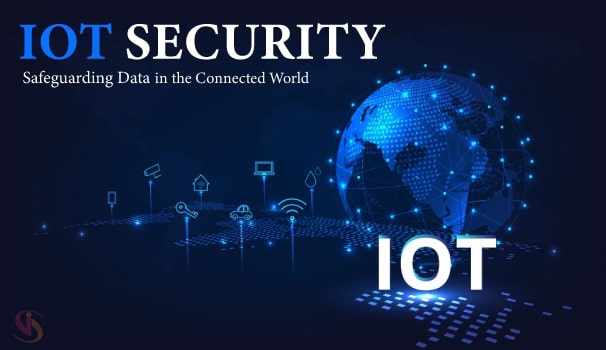
IoT security best practices are essential for data protection in today's interconnected world. Safeguarding IoT devices against cyber threats is crucial to ensuring the privacy and integrity of sensitive information. Highlighting keywords like IoT security best practices For data protection and cyber threats" can enhance the description's visibility and relevance.
Understanding IoT Security:
IoT security encompasses a range of measures and protocols designed to protect IoT devices, networks, and data from unauthorized access, cyberattacks, and data breaches. It involves securing the hardware and software components of IoT ecosystems to mitigate vulnerabilities and minimize risks, including addressing cyber threats in the Internet of Things (IoT).
Challenges in IoT Security:
One of the major challenges of IoT security is its vast scope. and diversity of IoT devices. Each device presents unique security requirements and potential vulnerabilities, from wearable gadgets to industrial sensors. Additionally, many IoT devices' limited computing power and storage capacity pose challenges for implementing robust security measures, including secure authentication methods for IoT devices.
Several critical threats jeopardize IoT security, including:
Malware and Ransomware Attacks: Malicious software can infect IoT devices, leading to data theft, system disruption, or ransom demands.
1) Distributed Denial of Service (DDoS) attacks can overload Internet of Things (IoT) networks, leading to downtime and service interruptions.
2) Unauthorized Access: Weak authentication mechanisms or default passwords can allow unauthorized users to access IoT devices and networks.
3) Data Privacy Concerns: IoT devices collect vast amounts of data, raising concerns about privacy breaches and unauthorized data access.
4) Risks associated with the supply chain: Flaws in the hardware or firmware may jeopardize IoT security. IoT security issues and solutions for industrial Internet of Things (IIoT) systems security.
Best Practices for IoT Security:
To enhance IoT security and mitigate risks, organizations and individuals can adopt the following best practices:
1. Strong Authentication: To confirm user identities and stop unwanted access, utilize robust authentication techniques like multi-factor authentication (MFA).
2. Encryption: Encrypt data while it's in transit and at rest to prevent data interception or unauthorized disclosure.
3. Frequent updates and patch management: To fix known vulnerabilities, keep IoT software and devices updated with the newest firmware and security patches.
4. Segment IoT networks to isolate important devices and lessen the effect of security breaches.
5. Monitoring and Logging: Deploy monitoring tools to detect suspicious activities and maintain detailed logs for forensic analysis and incident response.
6. Security by Design: Incorporate security considerations into the design and development of IoT solutions, focusing on privacy by design principles.
7. User Education: Educate users and employees about IoT security risks, best practices, and cybersecurity hygiene to reduce human-related vulnerabilities.
Conclusion
IoT security is a dynamic and evolving field that requires proactive measures to protect data and mitigate cyber threats in the connected world. By implementing robust security practices, organizations and individuals can leverage the benefits of IoT technology while safeguarding sensitive information effectively.